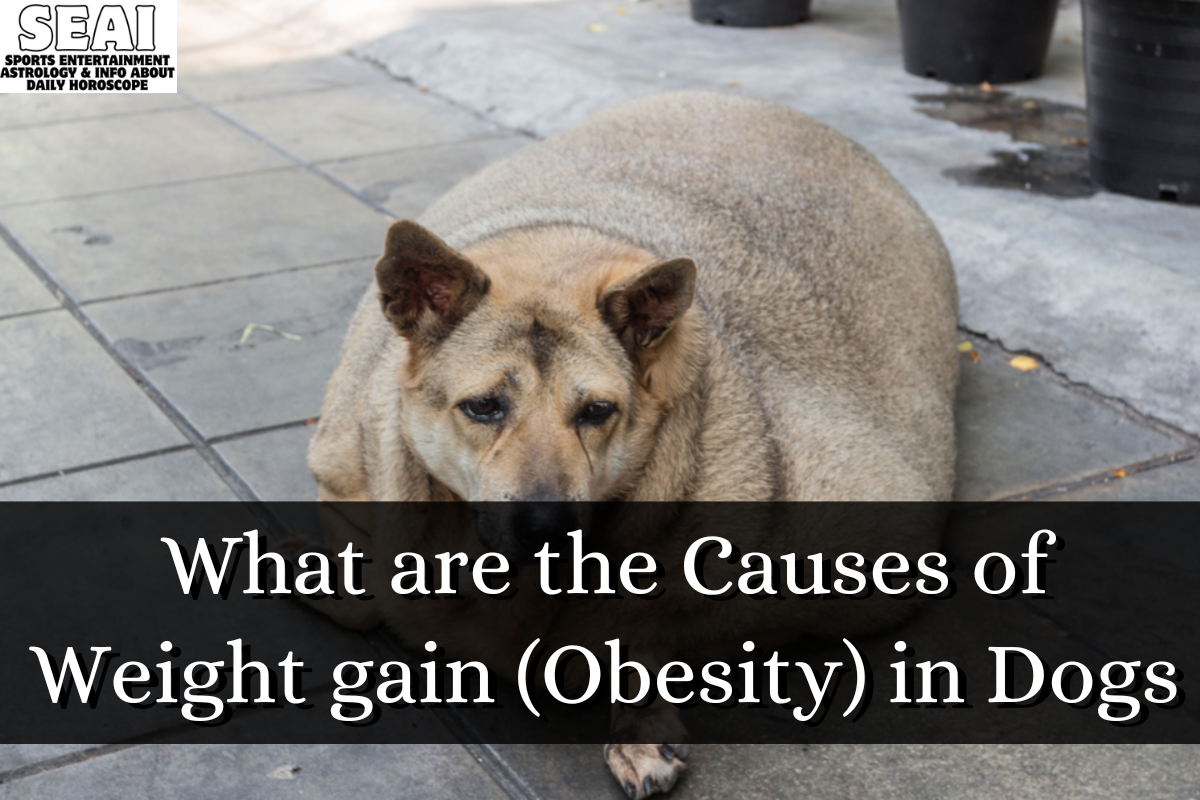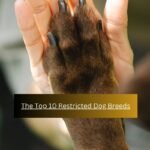What are the Causes of Weight gain (Obesity) in Dogs: White adipose tissue in dogs is usually caused by energy intake exceeding energy expenditure. Obesity is linked to decreased life span, mobility, diabetes, hypothyroidism, osteoarthritis, hypertension, cardiovascular disease, difficulty breathing, grooming, hyperthermia, and cancer.
Pet obesity increases veterinary costs and lowers quality of life. About 30% of veterinary patients are overweight. Obesity raises veterinary costs, quality of life, and cancer risk. Simple diet, exercise, and awareness changes can yield results if followed.
Dog obesity symptoms
In dogs, obesity symptoms include:
- Weight gain
- Little or no waistline
- Unpalpable ribs
- Body fat excess
- Bloated belly
- Poor grooming
- Poor mobility
- Lethargy
- Trouble breathing
- Causes of Dog Obesity
- These factors can cause dog obesity:
Environment
- Overfeeding—Feeding more than the pet can exercise. Table scraps, high-fat foods, number of meals, treats, and diet variation contribute.
- Indoor pets are more likely to be obese.
- The owner doesn’t realize the dog is obese.
Physiology
- Over-5-year-old dogs burn fewer calories and decrease voluntary activity.
- Genetic predisposition—Terriers, spaniels, dachshunds, beagles, and Labrador retrievers are predisposed to obesity.
Surgery
- Sex hormone reduction decreases energy expenditure and can increase hunger.
Medications
- Overeating can result from phenobarbital (anticonvulsant).
- Weight gain and abnormal fat deposition can result from glucocorticoids.
Diseases
- Thyroid dysfunction can cause weight gain.
- Insulinoma causes weight gain.
- Adrenocorticism can cause weight gain.
Dog Obesity Diagnosis
Measure dogs’ weight and get a body condition score to diagnose obesity. The body condition score system is easiest to use at home to determine obesity. The BCS is assigned a number in various ways, but all charts use the following general body condition measuring system.
Measurements of health:
- Underweight: Ribs, spine, or pelvic bones are visible.
Ideal Weight: Gentle petting feels ribs. Visible from above, waistline thinner than upper body. - Overweight: Gentle petting does not feel ribs. No difference in upper body and waist size from above.
- Obese: Only pressure feels ribs. Same or wider waistline than upper body. Stomach distension.
- If your pet is overweight or obese based on the above body condition measurements, visit the vet to rule out causes and start a weight management program. The vet will weigh and score your pet’s body condition. Results are compared to breed standards.
- Body weight over 10-15% is obese. A nine-point BCS score above seven indicates obesity.
Treatment of Dog Obesity
Dog obesity treatment involves weight loss and lifelong weight management. The healthy way to lose weight is to cut calories and exercise more, just like humans. Your vet will advise on portion sizes, feeding times, treat frequency, foods, and exercise. Protein and fiber boost metabolism and satiety, making high-protein, low-fat foods ideal for weight loss.
Eliminating table scraps and treats is crucial. Alternatives to treats include feeding green beans and other vegetables. Commercial and prescription canned and kibble dog foods for weight loss and maintenance are plentiful. Vitamin and mineral deficiencies make homemade diets unsuitable.
Diet and exercise are equally important for weight management. Fitness options include 30 minutes of leash walking per day , outdoor games, treadmill training, and swimming. Two to three afternoons a week at a dog day care can help your pet play and exercise.
Most pet stores sell a bowl that requires the dog to work for each bite if it eats too fast. A treat ball that rewards your dog for rolling it is another good tool for exercise. Dog training is fun for owner and pet, but reward your pet with green beans instead of high-calorie treats.
Dietary changes should be gradual to avoid gastrointestinal upset. After buying new food, mix half with old food and feed it for 7 days unless your vet says otherwise. Only then can you feed the new food safely.
If you like this Article about What are the Causes of Weight gain (Obesity) in Dogs please share this Article with your friends and family members.






Leave a Reply